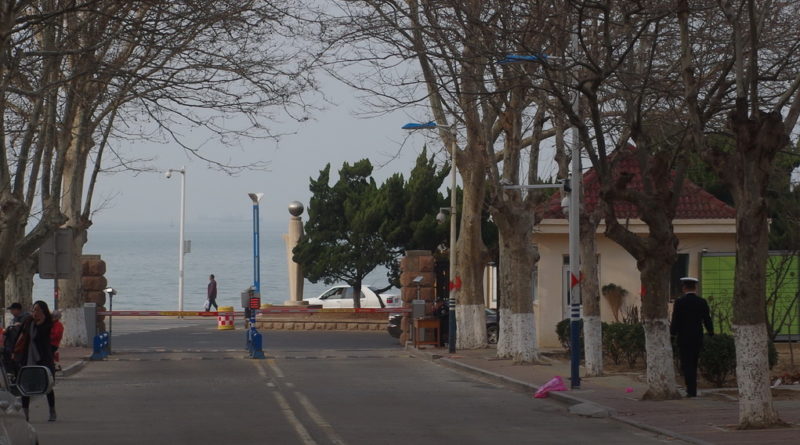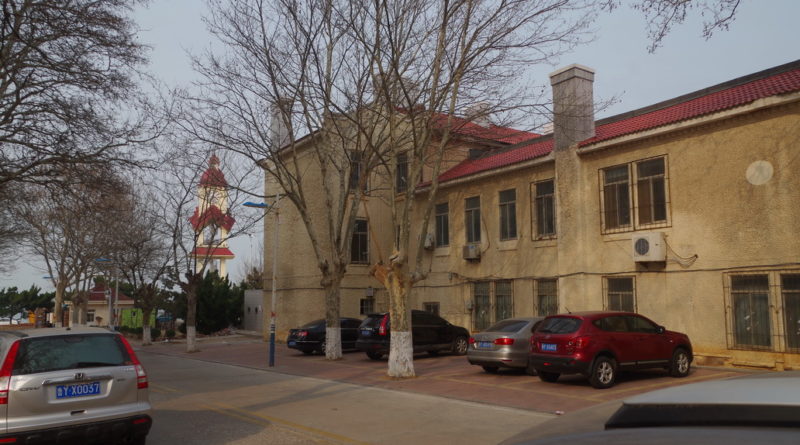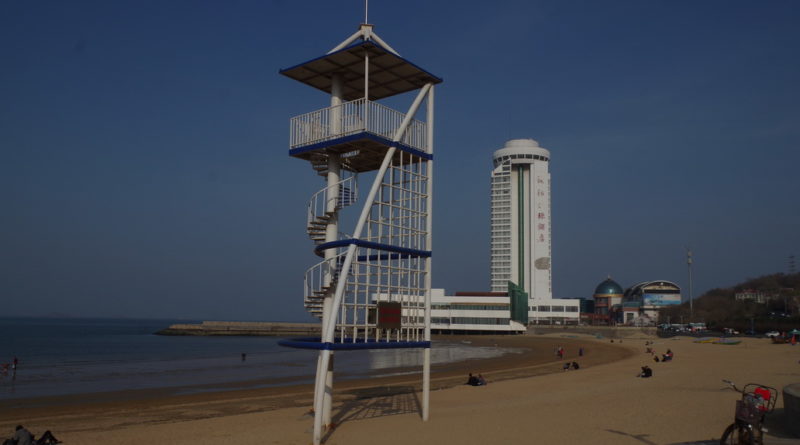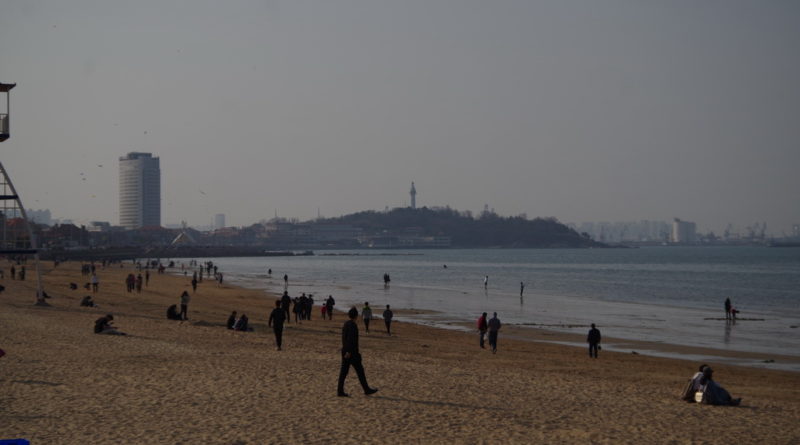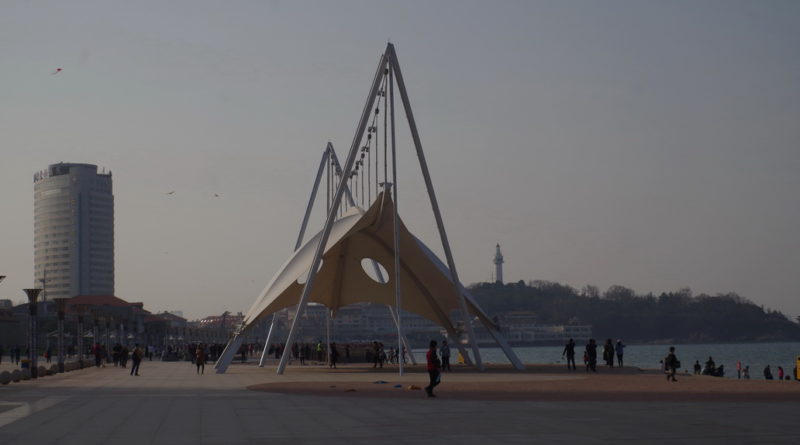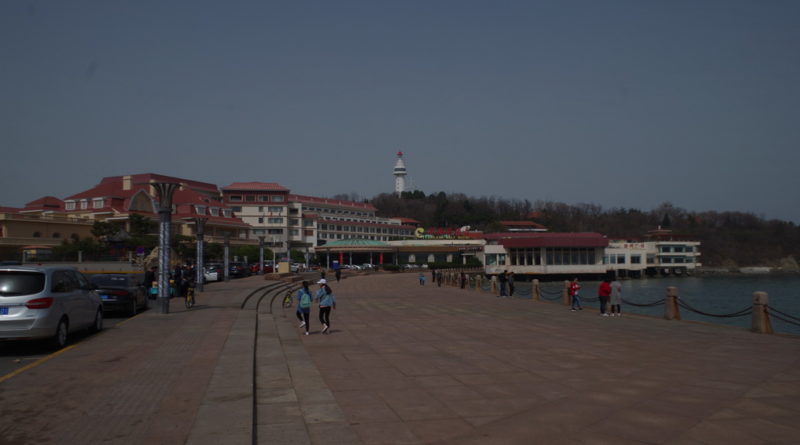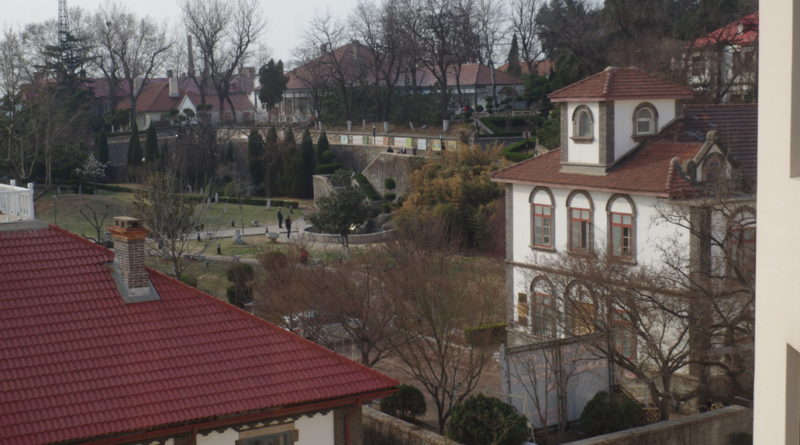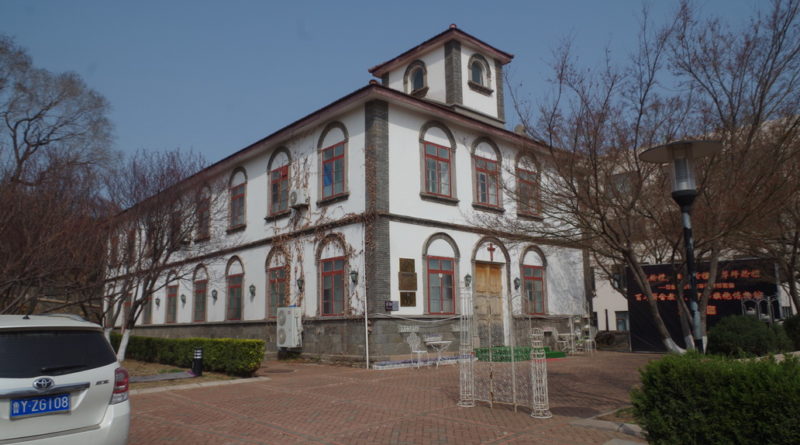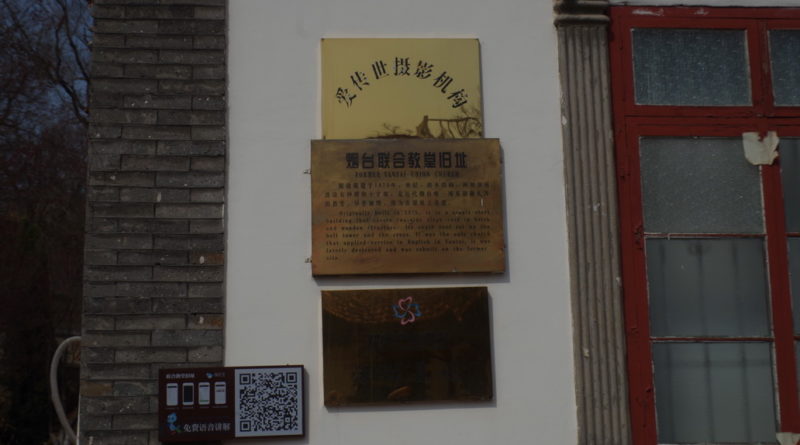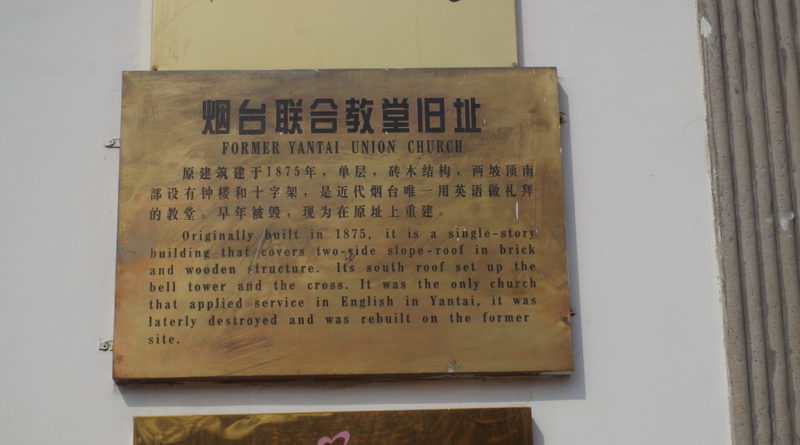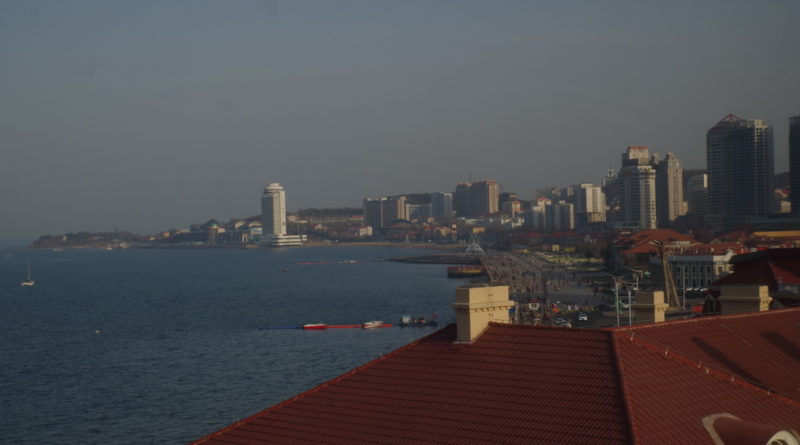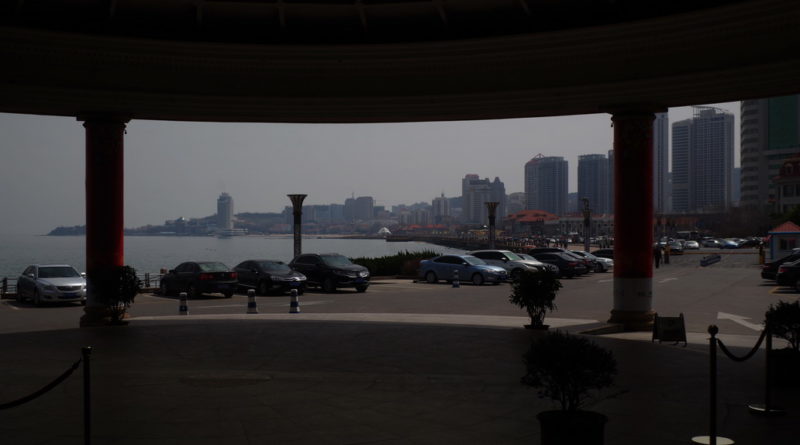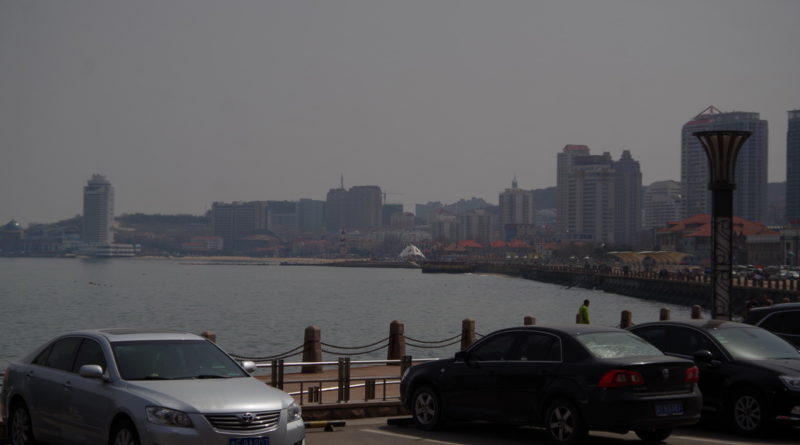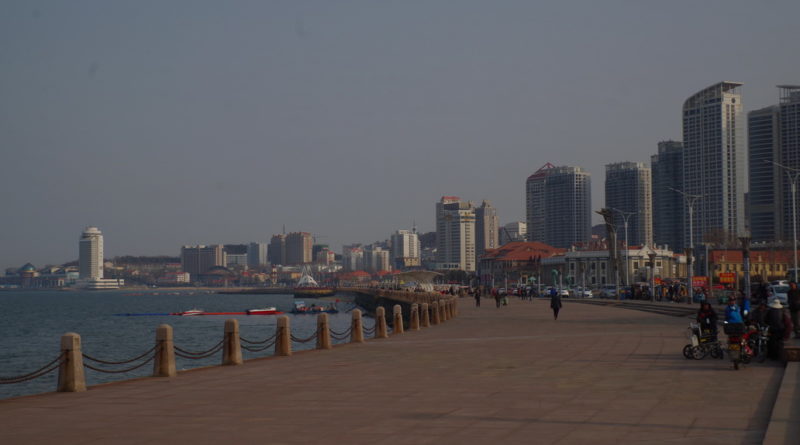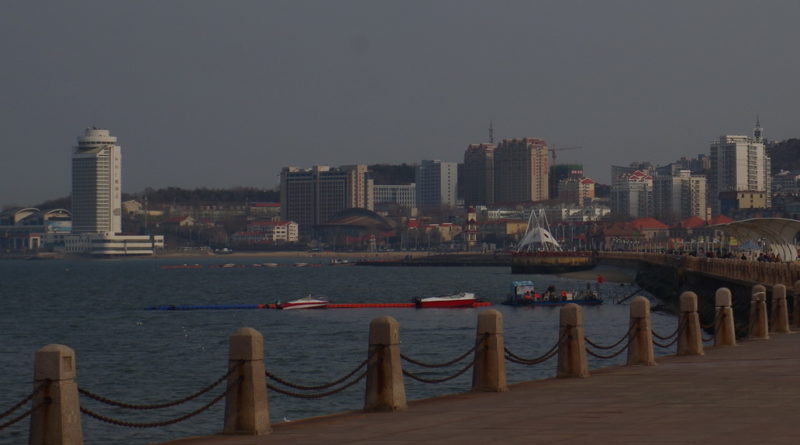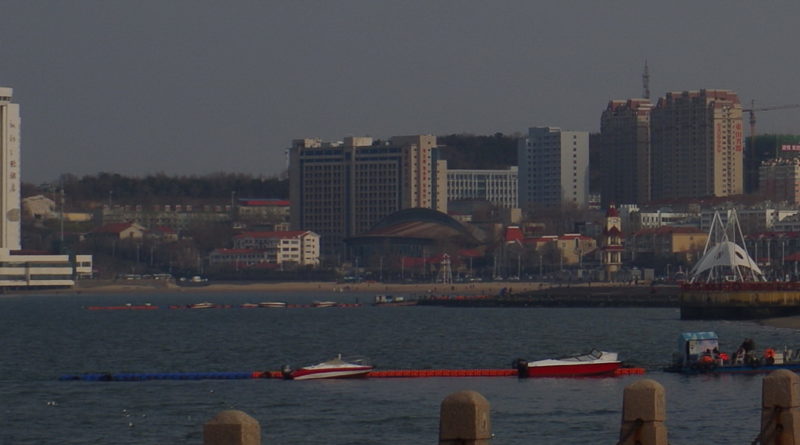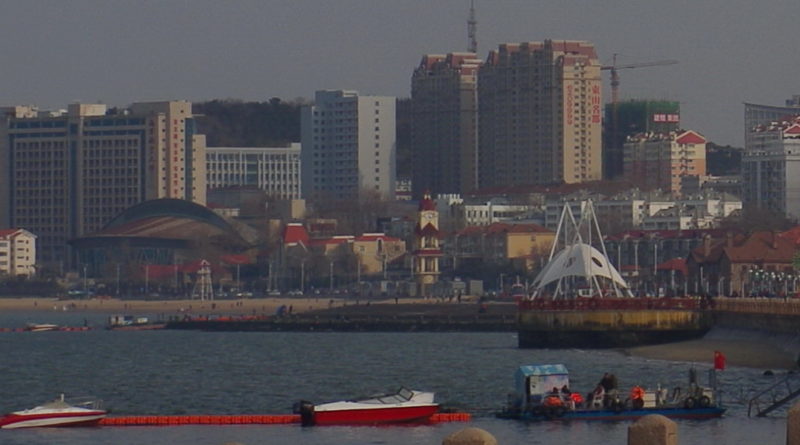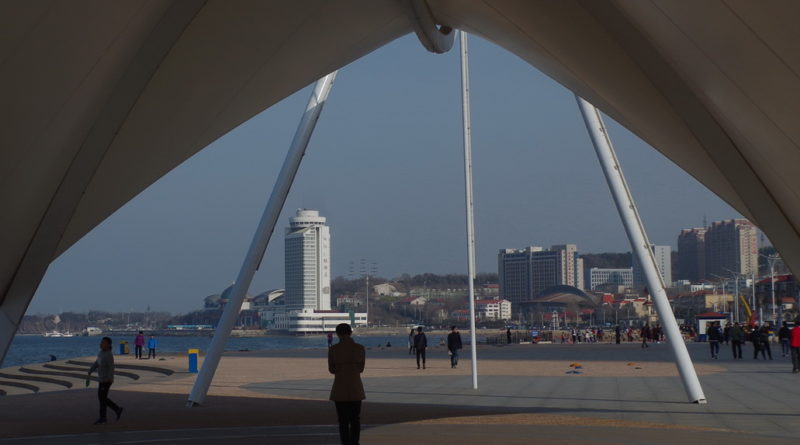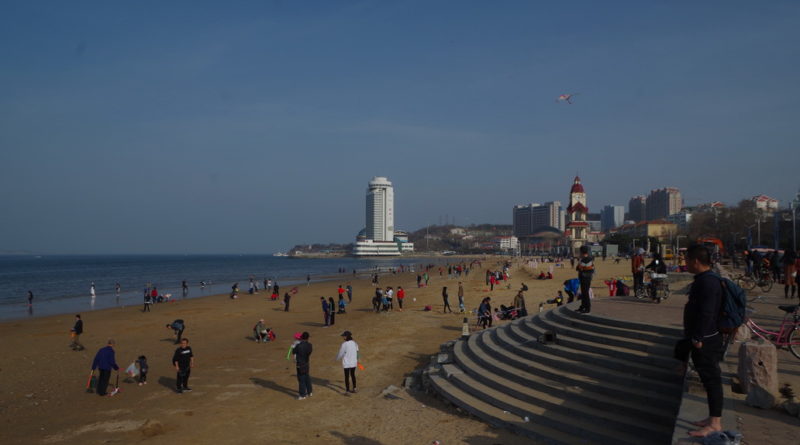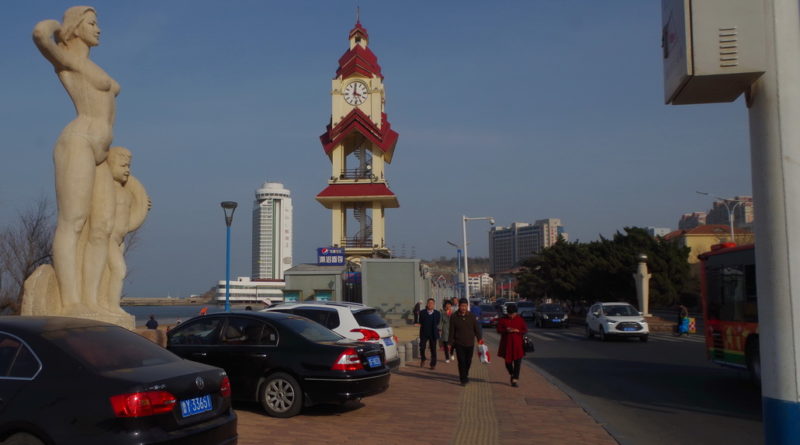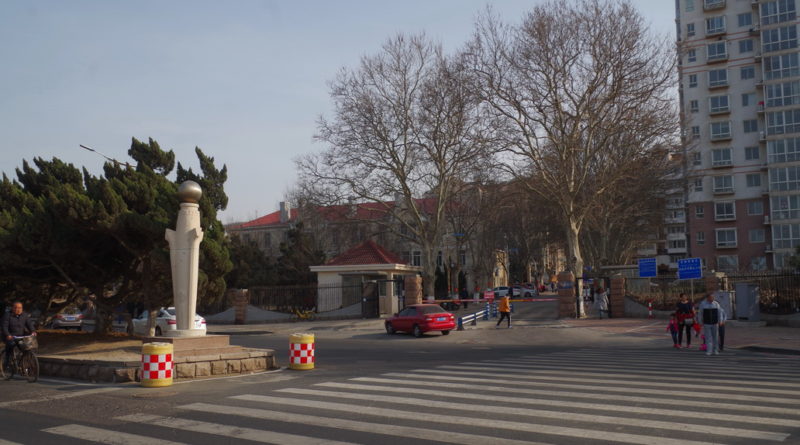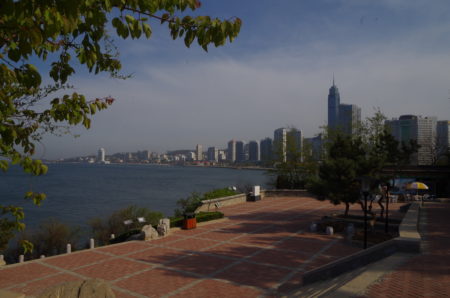 The Yantai beach area extends from the famous Lighthouse Hill to a second promontory a few kilometres to the east. Beyond the Lighthouse to the west is the commercial port area. Farther east, beyond the “golden crescent,” is another lengthy stretch of attractive beach next to new residential areas and two of Yantai’s universities.
The Yantai beach area extends from the famous Lighthouse Hill to a second promontory a few kilometres to the east. Beyond the Lighthouse to the west is the commercial port area. Farther east, beyond the “golden crescent,” is another lengthy stretch of attractive beach next to new residential areas and two of Yantai’s universities.
The beach, with its broad walkway (often called a “bund”), is where foreign powers set up their presence starting about 1860, building out from the port area and Lighthouse Hill. The Golden Gulf Hotel, location of our stay in 2018, is nestled at the base of Lighthouse Hill. Behind it are some of the oldest buildings still remaining in Yantai (some of which are currently being demolished). Perhaps I will add another photo album about this in the future.
The Chefoo School was constructed at the far eastern end of this crescent beach on land once offered for sale by a farmer.
On Sundays, more than a hundred years ago, Chefoo School children would dress for church in their “Sunday best.” While both Catholics and Protestants had churches in Yantai, it was the Union Church to which many of the staff and students would make their way for Sunday worship. (The word “union” frequently crops up in the history of early Western institutions in China, signifying agreements among different Western Christian mission groups to cooperate on projects including churches, schools and hospitals.)
The Union Church is located immediately behind our Golden Gulf Hotel. It could be seen and photographed from my fourth-floor hallway window, and later approached as we walked in what is promoted locally as the Yantaishan Scenic Area. Also from the windows of the hotel, I shot photos of the beach area (over the red roof of the famous Chefoo Club).
On the Saturday following our museum exhibit event, some friends and I walked the length of this beach, from the tall white International Hotel at the far eastern end back to the Gulf Hotel. It must have taken us at least 45 minutes with just a few stops to shoot photos.
First photos here are from inside the military academy grounds and show significant landmarks on the beach beyond the gate.
Next are photos that show the westward extent of the beach towards Lighthouse Hill, near which is located the Union Church.
Other photos trace the beach area back again to the landmarks at the gate of the military academy and the remaining Chefoo buildings.
The photo set was prompted by historical records describing the Sunday routine when children of the boarding school would walk the distance to the Union Church. David Michell, in A Boy’s War (1988), writes:
-
On weekends we wore our white uniforms, little shirts with shorts that buttoned on round the waist. Early Sunday mornings we lined up in pairs and wound our way out of the compound in a long line under the interested gaze of the local people as we made our way to church.
We walked along the seafront through the foreign settlement, passing the Chefoo Club and homes of the Western business community en route to the Union Church or the Anglican Church…. (p 16)
Related to this walk to church is this further description of Sunday activities by Michell:
-
In the afternoon we were out in our crocodile lines again on our regular Sunday walks. The foreign cemetery was a favorite destination. In keeping with the principles of the Sabbath, we were not allowed to run around, but the upright gravestones and monuments of some of the missionary pioneers served us well for hide and seek at walking pace. I was hushed to a keep pondering when I came face-to-face with the headstones of the thirteen Chefoo boys who had died of ptomaine poisoning in 1904 when they had eaten chicken pies that had gone bad. (p 16)
While much of this Gold Beach was shrouded in haze during much of our stay in Yantai, I was happy to see it clear somewhat by the weekend. It was great to make out (with the help of my long camera lens) the Chefoo School buildings from the distance of the Chefoo Club and our hotel.
Click/tap image below to view in larger format.
First published: 2018/05/16
Latest revision: 2018/08/01
